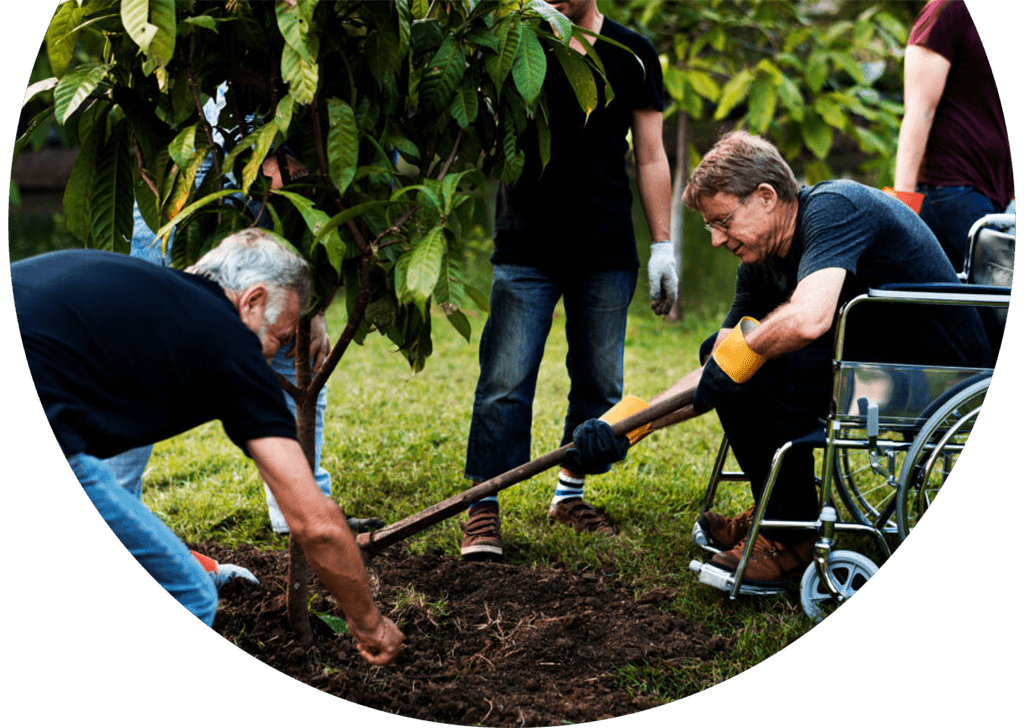
A Guide to Supported Independent Living
Jump to:
Whether you’re just beginning your NDIS journey, or you’re looking for a change in your living situation, it’s a good idea to learn about the different types of home and living supports funded under the NDIS.
This factsheet gives you information about Supported Independent Living and the process to get supports. It is aimed at NDIS participants, and carers of NDIS participants.
If you’re interested in Supported Independent Living, talk to us at any stage in your NDIS journey. Our expert staff will guide you through the process.
What is Supported Independent Living (SIL) and who can access it?
Supported Independent Living, or SIL, refers to a group of NDIS supports that help you live more independently.
SIL funding pays for personal support with everyday tasks like cooking and cleaning, and activities outside the home like grocery shopping or catching public transport. It can also fund supports so you can build these skills over time.
SIL is intended for participants with significant support needs, like a carer for most of the day. Generally participants who receive SIL share a home with other NDIS participants.
The amount of SIL funding in a participant’s plan will depend on their support needs, living arrangements, and the other supports funded in their plan.
SIL funding doesn’t pay for housing costs such as rent or mortgage. If you think you or someone you care for requires specialist disability accommodation, talk to us. We’ll connect you with the supports you need to flourish.
The Supported Independent Living process
To get supported independent living funding in your NDIS plan, you’ll need to talk to your NDIS planner about the help you need to live in your own home.
This will probably be discussed in your first planning conversation. If you want to live more independently, your NDIS planner will identify the kinds of supports that will help you do this.
You might want to ask your planner about SIL if your goals or living situation change. You will need to tell the NDIA about your change in circumstances, and they will contact you to talk about the supports you need.
To help the NDIA understand your support needs and what you can do independently, it helps to have referrals from health professionals and any of your current carers or support workers. Bring these to your planning conversation.
Some people who need assistance with tasks like cooking or getting ready in the morning don’t need assistance for most of the day. SIL might not be the best support option in this case, and you might receive funding for other home and living supports.
If your planner agrees SIL is the best option for you, they’ll work with you to find a SIL provider.
You can talk to different providers before choosing one. Choose a SIL provider that you like, feel comfortable with, and who you think will help you live the life you want.
Developing your roster of care and funding
Once you find a provider, you’ll work with them to develop a roster of care based on your support needs, and the support needs of everyone living in your house. A roster of care is a document that shows your support needs throughout the week, which support workers will help you, and at what times.
If you live with other people, you might share some supports with your housemates. For example, your support worker might come around to help everyone with their cooking at once, or you might all go to the shops together. That doesn’t mean you’ll never have one-on-one time with your support worker. Talk to the provider about this before agreeing to your roster of care.
Once the provider develops a roster of care you agree with, they will ask you (or your guardian or nominee) to sign it, and then it will be sent to the NDIA to decide how much funding for SIL is reasonable and necessary.
If you want more information on what’s considered reasonable and necessary in a roster of care, you can look at the NDIA’s SIL Operational Guidelines.
Once you, the NDIA and your provider agree to your roster of care, the NDIA will include SIL funding in your plan and you can start getting your services.
Your Supported Independent Living services with Claro
We take a personalised approach to getting you the SIL services you need.
If you’re in the middle of your NDIS planning process, our knowledgable support coordinators can help you navigate the NDIS, and work with a provider to develop your roster of care. We’ll make sure you get a level and type of care that works for you.
We also provide high quality, customised supported independent living services across Australia. We support our clients with everyday tasks like learning to cook and manage a home, as well as provide complex and necessary medical and personal care.
Some of the supported independent living services we offer include:
| Everyday living | Complex support |
| • Everyday household tasks, like cooking, cleaning and grocery shopping
• Personal care such as showering, dressing and getting ready each day • Assistance taking medications • Travelling to and • Maintaining health and fitness • Working with you to achieve your goals and develop your life skills • Starting a new hobby or connecting with friends, clubs and in the community |
• Complex bowel care
• Enteral feeding and management • Ventilation support • Subcutaneous injection • Diabetes management • We have a large network of registered nurses to ensure staff are trained and everything is in place to safely delivery higher complexity support. • We also can arrange access to therapy and clinical services, like speech pathology, physiotherapy or occupational therapy. |
We have thirty years’ experience working with clients who require tailored supports. We work with each client to learn your needs, your goals, and how you want to live your life.
If you or a loved one are looking to live more independently, contact us and we’ll work together to find the right fit.




